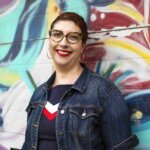I gave my mom a copy of Stone Butch Blues for Chanukah. It was a pretty funny picture over the holidays: the two of us lying by a pool in tropical St Martin, me reading The Mayor of Castro Street — the biography of Harvey Milk that inspired the much-lauded film starring Sean Penn — and her reading Leslie Feinberg’s classic about a genderqueer butch navigating the pre-Stonewall bar scene. It opened up all sorts of conversations about queer activism and culture that we’d never talked about — the divisions between butch and femme, class differences and how they affect the way we define our sexual orientation, and the tricky matter of pronouns when it comes to describing people who straddle the border between genders.
My brother and I are both gay and we grew up watching history being made as the Supreme Court ruled on cases ranging from inclusion of sexual orientation in human rights codes to adoption rights for queer couples and, eventually, gay marriage. But what was missing from that narrative was the compelling story of the struggles that accompanied those court victories — stories that were quickly forgotten as a new generation of queers grew up, accustomed to being treated like full citizens.
A professor at Carleton University recently told me how hard it is to teach the history of gay liberation to 18-year old university students who assume that equal marriage for same sex couples has always been a reality, “because, you know, Canada is a tolerant country.”
This got me thinking about the importance of sharing queer history with our friends and family — something that Milk is allowing many of us to do. Because, unlike family history, we need to actively seek out and share queer stories. For example, I know through osmosis that my great-grandfather emigrated from Poland and started out as a pedlar in Toronto, eventually opening a shoe factory that his sons took over. And I know about my grandmother’s family, who owned a store on Ontario Street in Montreal, and who moved there as part of the waves of Eastern European Jews who fled pogroms in Russia and later the Holocaust, to settle in Kensington Market in Toronto and The Main in Montreal. These are stories I grew up with — unlike stories of queer struggle. I had to seek out queer history independently.
What we — and our parents — would benefit from is learning how the queer community fought for every shred of human rights legislation that now applies to us. Try these tidbits to get the ball rolling.
1. Lillian Faderman is an American historian who has traced the ways that lesbians in the US benefited from invisibility and lived in “Boston marriages” with female life-partners for many years, often seamlessly. Did you know that the famous American suffragist Susan B Anthony spent much of her life with “lover” Emily Gross? As it turns out many of the women who fought for the vote, though married to men, lived the majority of their lives with other women. Though we can only speculate about the specific nature of their relationships, it leaves no doubt that women-loving-women were at the forefront of the fight for women’s suffrage.
2. You’ve probably heard of the Stonewall riots that happened in 1969 in New York City, but did you know about the riot at Compton’s Cafeteria in San Francisco three years earlier? That’s when transsexual sex workers and drag queens fought the cops and the owners of a local restaurant for barring them admission. The resulting riot — with handbags and high heel shoes sent flying — signalled the beginning of the fight for transgender rights, a piece of San Francisco history omitted from Harvey Milk’s biography. It took Susan Stryker years of digging to uncover this almost-forgotten story. She interviewed the aging queens who took part in the 1966 uprising, cementing a place in history for the brave people who demanded their dignity at a time when queers were routinely jailed for being queer.
3. How much do you know about the Fruit Machine? The RCMP spent the 1950s to the 1970s attempting to purge gays and lesbians from the civil service in a facile attempt to make the Canadian government less vulnerable to blackmail. They constructed a machine that was supposed to help identify homosexuals based on people’s reactions to specific imagery — an artefact that is now on display in Ottawa at the Canadian War Museum. As Gary Kinsman has revealed, the only people who were ever blackmailed were the gay government employees who were routinely stalked and outed by the police. It’s something to think about, in light of the recent proposal to force all government employees to undergo mandatory fingerprinting and credit checks.
4. Have you gotten used to seeing gay cops march in summer pride parades? Well, in Montreal in 1990, police officers donned latex gloves to brutally raid a loft party called Sex Garage. They beat up and arrested more than 400 people, provoking a massive sit-in and protest outside Station 25.
Blockbuster films about gay rights struggles only come out once in a generation. That’s why it’s our job to make sure that we transmit our “chosen family history” to anyone who will listen.

 Why you can trust Xtra
Why you can trust Xtra


